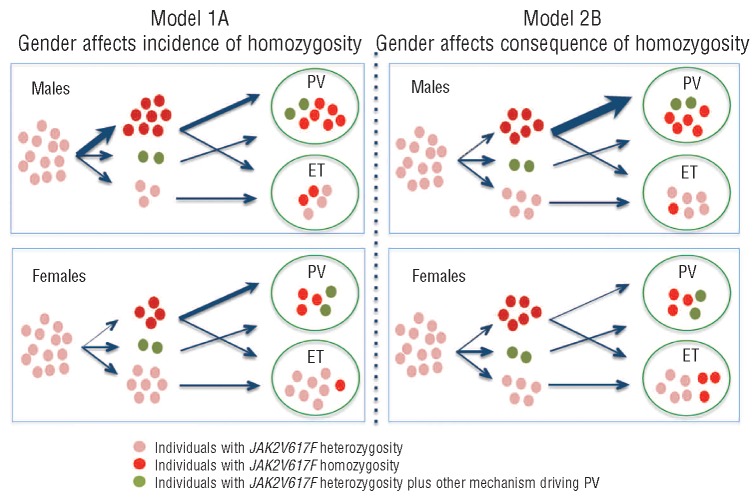Figure 1.
Possible models to explain the associations of JAK2V617F homozygosity with gender in PV and ET. Each symbol represents one patient. Starting from a pool of individuals with subclinical JAK2V617F heterozygous mutations (pink symbols), there are three possible outcomes: acquisition of a significant JAK2V617F-homozygous clone (red symbols); acquisition of other mechanisms that can drive PV (green symbols); or maintenance of JAK2V617F heterozygosity alone. (A) JAK2V617F homozygosity occurs at a higher rate in males compared to females, but the phenotypic consequences of homozygosity are equivalent between males and females: most individuals develop PV and a minority develop ET. Of those individuals who remain JAK2V617F-heterozygous, some develop PV as a consequence of mechanisms other than JAK2V617F homozygosity, and others develop ET. (B) JAK2V617F homozygosity occurs at an equivalent rate in males and females but the phenotypic consequences are different: homozygosity in males is more likely to lead to PV than homozygosity in females, because of other factors that facilitate erythropoiesis in males and/or constrain erythropoiesis in females. The relative numbers of individuals with each genotype are approximations for illustrative purposes, and are not derived directly from the colony analysis.

